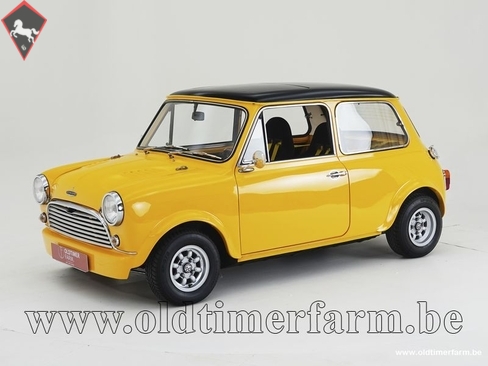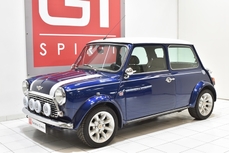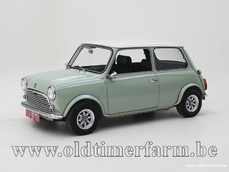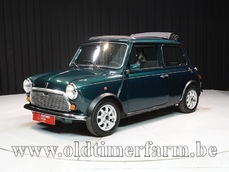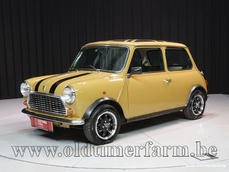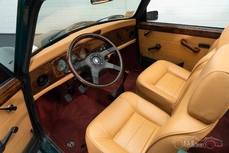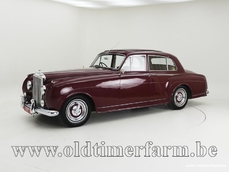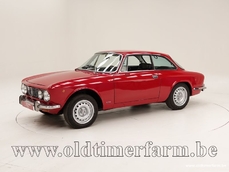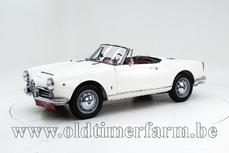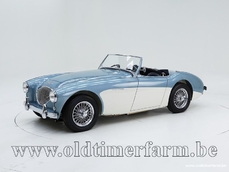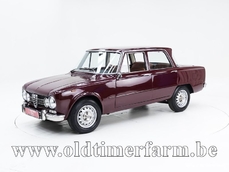Mini 1300 1300 '74 1974
Allgemeine Beschreibung :
Buy-and-drive, comes with recent maintenance bills British-Italian, brings the best of both worlds for a good price Sporty whole with racing seats and four-point seat belts The Mini, a small car with a big story. In 1959, British car manufacturer British Motor Corporation (BMC) released the Mini, it is obvious that they had a clear goal in mind: releasing a small city-fit car with a cute design. Thanks to The Beatles and its starring in countless famous films, the car has acquired an iconic status over the decades. It was Alec Issigonis, a British-Greek car designer that worked for BMC, who gave birth to the Mini. He had a clear goal in mind: to create an affordable and fuel-efficient car that is efficient and light-steering in narrow British city streets. This approach, along with the playful design, created a true hype among young people. The Mini also became extremely popular with influential people, to the point that all members of The Beatles - John Lennon, Paul McCartney, George Harrison, and Ringo Starr - proudly show off their Minis. In 1969, the car takes on the leading role in the film The Italian Job, in which bank robbers used a Mini as a getaway car. Also Mr. Bean’s car is a lime green 1977 Mini, which emphasizes his clumsiness in the best way possible. Initially, the Mini was manufactured in various finishes, such as a sedan, a station wagon, a van, and even a pickup truck. Those finishes never really became fancied among the crowd. Also, in the 1980s, the Mini began losing its fame due to fierce competition from other car brands. This caused a harsh financial crisis in 1986 at British Leyland - the former BMC that also own Jaguar, Rover, Triumph, and MG. They even decide to restructure and privatize the company and from that moment on Rover Group was born. In 1994, Rover Group sells Mini to BMW, which seven years later, in 2001, launch a refined version of the Mini. Nowadays BMW still produce the Mini – baring its British identity in mind – and it is available in various finishes: a convertible, a fully electric version, a hybrid version, a sports version, and even a station wagon. As mentioned before, the goal was to build a city car that fit in traffic in cities, therefore they had to use as little space as possible, that was a real challenge in the middle of the 20th century. The 1950s are often considered a tipping point in automotive technology, and the Mini has contributed to that tipping point: a front-wheel drive car with a transverse and space-saving engine that is highly responsive and fit to city traffic. Today, the Mini is a coveted classic car, and not only among classic car enthusiasts. The cute and vulnerable design simply captures everyone's hearts. Innocenti Mini Not only was the Mini precious in Great Britain, also in Italy, the eyes couldn't be kept away from the Mini. What hindered its success was the protectionist policy, particularly in the automobile industry, though, the British found a solution. In 1965, BMC entered into an agreement with the versatile Innocenti, an Italian company founded in 1931, which produced refrigerators, motorcycles, and cars under license. Through this collaboration, BMC were able to bring their Mini to the Italian market and offer it at a competitive price. From the get-go, the Mini Innocenti was not much different from the original Mini. The earliest edition was delivered as a knock-down kit, but this approach was quickly abandoned. The Mini Innocenti continued to be produced until 1993, and the only thing it really retained after a facelift in 1975 was its model name, due to the many changes it underwent. The Mini Innocenti, the one built under BMC's supervision from 1965 to 1975, is just as sought after today as the British Mini. There are some technical differences that enthusiasts truly appreciate. It remains a unique car. Technical information: Body work Length (cm): 307 (121 inch) Width (cm): 144 (57 inch) Height (cm): 134 (53 inch) Wheelbase (cm): 204 (80 inch) Weight (kg): 690 (1521 lbs) Mechanics Engine: 1275 cc straight-four front-engine Valve gear: 8 Fuel system: 2 SU carburettors Gear box: 4-speed manual Transmission: FWD Left-steered power: 63 hp (47 kW) at 5800 t/m torque: 98 Nm at 5800 t/m Top speed: 157 km/h (98 mph) **Please do not hesitate to contact us via email to receive the detailed expertise report**
1974 Mini 1300 1300 '74 is listed zu verkaufen on ClassicDigest in Aalter by Oldtimerfarm for €18250.
Fakten der Auto
Karosserietyp : Auto Marke : Mini Modell : 1300 Ausführung : 1300 '74 Hubraum : 0.0 Modelljahr : 1974 Lage : Aalter Fahrzeug Anmeldung : Undefiniert
18250 €
People who viewed this Mini 1300 also viewed similar Mini listed at ClassicDigest
Other cars listed for sale by this dealer
über Mini
Der Mini ist zweifellos ein ikonisches Auto, das die Automobilindustrie revolutioniert hat und den Standard für Kompaktwagen gesetzt hat. Hier ist eine kurze Geschichte des Mini, seiner Entwicklung und einiger wichtiger Versionen des klassischen Mini:1. Ursprünge und Entwicklung:
Gründer und Designer: Der Mini wurde von Sir Alec Issigonis, einem britisch-griechischen Automobilingenieur, entworfen.
Einführung: Der Mini wurde 1959 offiziell von der British Motor Corporation (BMC) vorgestellt.
Innovatives Design: Issigonis' Design umfasste einen Quermotor, Frontantrieb und ein kompaktes Layout, das den Innenraum maximieren sollte.
2. Klassische Mini-Modelle:
Mark I (1959–1967):
Mini Cooper (1961): Die leistungsorientierte Cooper-Version, in Zusammenarbeit mit dem Rennlegenden John Cooper entwickelt, wurde eingeführt.
Mark II (1967–1970):
Geringfügige Designänderungen, einschließlich eines neu gestalteten Kühlergrills.
Mark III (1969–2000):
Einführung der Varianten Clubman und Clubman Estate.
Weitere Designaktualisierungen, einschließlich eines abgerundeteren vorderen Kühlergrills.
3. Mini Cooper S:
Leistungsvariante: Der Mini Cooper S, insbesondere die Version Mk I, wurde durch seinen Erfolg bei Rallye-Rennen bekannt und gewann mehrmals die Rallye Monte Carlo.
4. Mini Moke:
Nutzfahrzeug: Der Mini Moke war ein Nutzfahrzeug auf Basis des Mini-Plattformkonzepts mit offenem Verdeck. Er wurde in verschiedenen warmen Regionen populär.
5. Mini Countryman:
Verlängerte Version: Der Mini Countryman wurde als längere und praktischere Version des klassischen Mini eingeführt. Er verfügte über eine rückwärts öffnende Tür für einen leichteren Zugang zu den Rücksitzen.
6. Ende der Produktion:
Spätere Jahre: Die Produktion des klassischen Mini lief bis zum Jahr 2000 weiter.
Abschlusseditionen: Der letzte klassische Mini verließ die Produktionslinie am 4. Oktober 2000 und markierte das Ende einer Ära.
7. BMW-Ära und neuer MINI:
BMW-Übernahme: BMW erwarb die Rechte an der Marke Mini und führte 2001 den neuen MINI ein.
Moderne Interpretation: Der neue MINI behielt einige Designelemente des klassischen Mini bei, verfügte jedoch über moderne Technologie und Sicherheitsstandards.
8. Erbe und Einfluss:
Kulturelles Symbol: Der klassische Mini wurde zu einem kulturellen Symbol, das britisches Design und Effizienz verkörpert.
Einfluss auf Kompaktwagen: Das Layout und die Designprinzipien des Mini beeinflussten die Entwicklung von Kompaktwagen für Jahrzehnte.
Die Auswirkungen des Mini auf die Automobilindustrie gehen über seine kompakte Größe hinaus. Er repräsentiert eine Designphilosophie, die auf Effizienz, Raumnutzung und Fahrspaß setzt. Die anhaltende Beliebtheit des klassischen Mini ist ein Beweis für sein zeitloses Design und innovative Ingenieurskunst.
